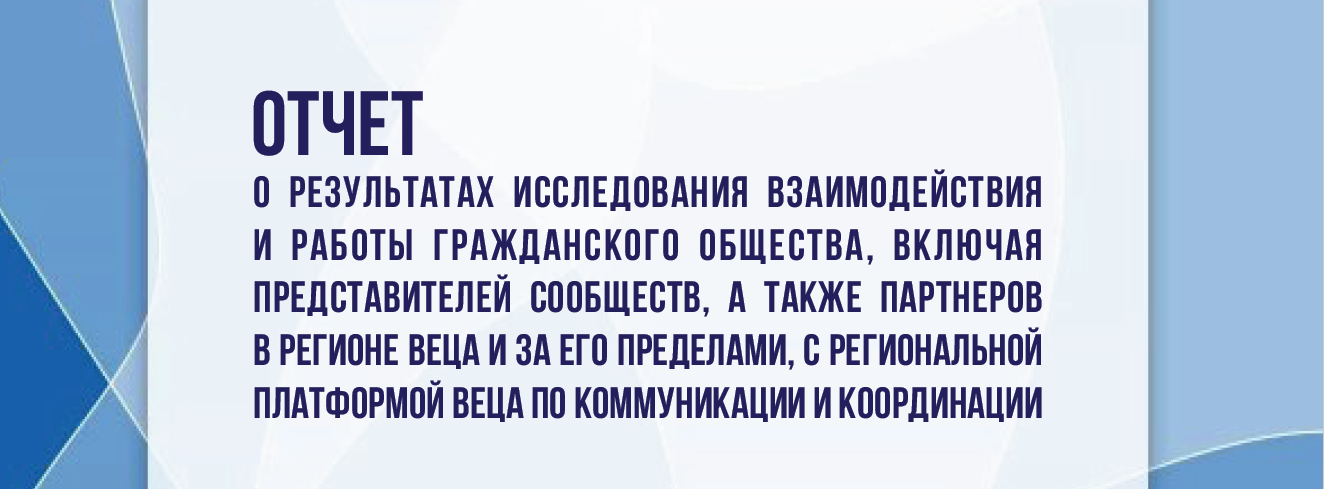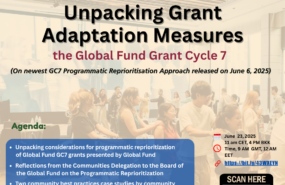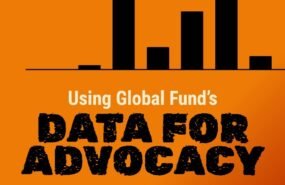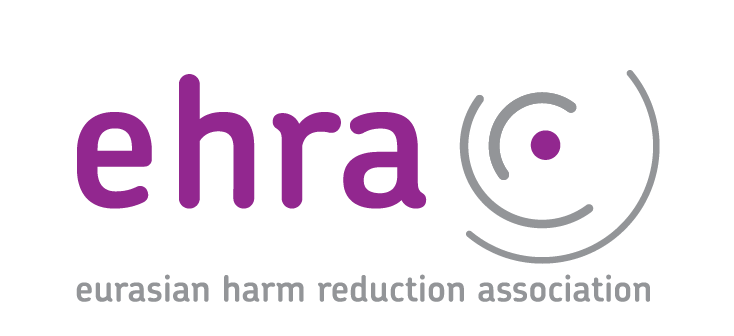EECA: what does the region consist of and how is it different?
- 25.07.2016 09:25
- Post Views: 6,680
Geography
Different sources define borders of EECA region in different ways and each regional organization or network builds their activity in the countries, which are most important for it or correspond with its targets, tasks and possibilities.
For example, UNFPA distinguish 20 countries, Global Fund — 22 (in accordance with Turning the tile against HIV and tuberculosis: Global Fund investment guidance for Eastern Europe and Central Asia).
Target of the project Regional Platform-EECA is quite big and in our work we focus on all 29 countries of the region, which geographically belong to Eastern Europe and Central Asia, however, taking into consideration the fact that currently Global Fund grants are active only in 17 fo these countries.
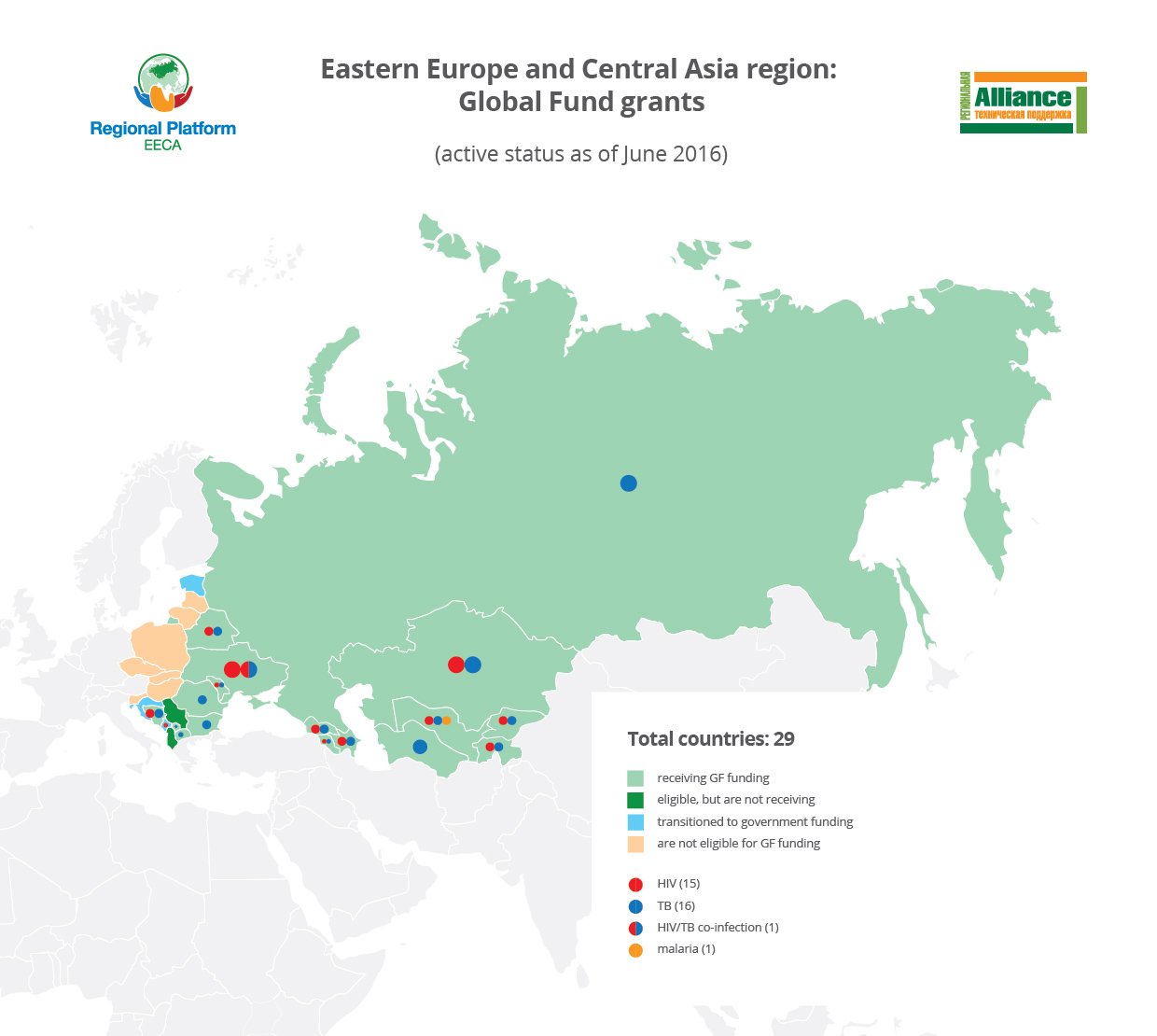
HIV and TB situation
In the last UNAIDS report on global situation with AIDS, EECA continued to be the first in amount of new cases and low coverage of HIV treatment, giving place to the region Middle East and North Africa only. 90% of all cases in EECA are exposed among representatives of key affected groups of population and their sexual partners.
New data on the region include:
- New evaluation of PLWH number – 1,5 million
- New HIV cases — 322 thousand in 2015
- HIV key affected groups of population or their sexual partners — 96%
- The biggest number of PLWH are people who inject drugs – 51%, then – clients of sew workers and other sexual partners of representatives of key groups of population — 33%
- Treatment coverage — 21% (second position form the bottom after the region Middle East and North Africa)
TB also constitutes serious danger in the region with 340 thousand of new cases and high burden of having multidrug resistant tuberculosis – 72 thousand, out of which only 59% are diagnosed.
Key problematics and specificity
Significant difficulty in the region, particularly in the context of need of Transition of funding programs to fight epidemics from external sources (for example, Global Fund) to national, – is strengthening and support of real community role in decision-making.
In accordance with data of assessment of needs and gaps in technical support in the region, implemented in terms of Regional Platform-EECA project, current challenges for the region in this context include:
- Significant involvement of society based organizations into transition planning
- Making participation of communities representatives in national coordination authorities on HIV and TB and country coordination committees (CCC) more meaningful
- Building strong partnerships of civil society with governmental structures on national level
- Organizational capacity building of civil society, including management, participation in governmental and international processes, planning and monitoring of responses to HIV and TB
In terms of development of online course on Communities engagement into response to epidemics, our experts also highlight the following challenges:
- Difficulties with early exposing of HIV and tuberculosis;
- Provision of access to treatment for affected communities;
- Oppressive policies, particularly difficulties with implementation of substitution therapy and even with first aid in case of overdose of opiates using naloxone;
- Oppressive legislation regarding homosexual people;
- Lack of funding of systematic work targeted to resistance preventive measures, weak laboratory diagnostic base;
- Lack of funding of preventive (often all) programs by government;
- Corruption in health care system and law enforcement authorities, preventing implementation of progressive approaches and significantly decreasing interventions economic effectiveness;
Due to these challenges and importance to overcome them, RP EECA builds partnership of key stakeholders of civil society in the Region, so called EECA Consortium. Result of coordination and extended partnership is synergy of use of existing resources and more powerful sustainable voice of civil society in response to epidemics.
Services for migrants and refugees from Ukraine – HIV/TB care with a focus on key populations
Due to the increasing flows of refugees from Ukraine because of Russia’s invasion of Ukraine, the EECA Regional Platform created a spreadsheet to fill contacts details of face-to-face and online services for refugees and migrants (with a focus on HIV/TB care and key population groups).
Regional Platform – EECA
This web-resource is a part of new regional communication and coordination project “Regional Civil Society and Community Support, Coordination and Communication Platform - EECA”, implemented by Eurasian Harm Reduction Association (EHRA).
Tags
See also
-
Webinar: Using Global Fund's Data for Advocacy 12.06.2025 12:00
-
GC7 Grant Reprioritization: Updated Timelines 10.06.2025 14:37
-
GFAN reports back: 53rd Global Fund Board meeting 26.05.2025 14:26
